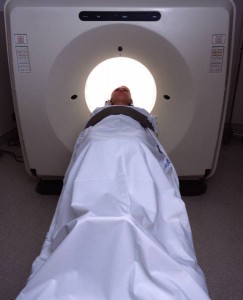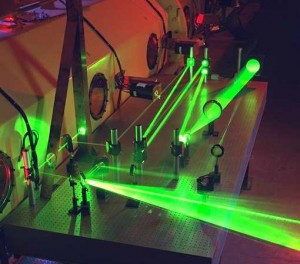A few weeks ago, I found myself in the emergency room of the University of Arizona Medical Center under excruciating pain. I was pretty sure, but far from certain, that this was a kidney stone – that same pain had landed me in Urgent Care a few weeks earlier.
What I did know is that the Urgent Care folks had warned me that if the pain returned I should make my way to an hospital emergency room, where they would be better equipped to make an unambiguous diagnostic. So there I was, and after the medical staff managed to get the pain under control, a CAT scan confirmed the kidney stone theory. When the hope that the stone would pass naturally did not materialize, it was decided to remove it surgically via ureteroscopy. Another few weeks later the ureteral stent placed during surgery was removed, and I find myself without pain for the first time in what seems like an eternity.
This is I am sure a pretty familiar story to many visitors of this website, but what may be a bit different is that I am a physics professor specializing in optics and atomic physics. So I happen to be reasonably familiar with the bits of physics and engineering history that helped make this treatment possible.

image from Office.com
Take the CAT scan, for example: CAT stands for Computerized Axial Tomography. The idea is that a machine sends X-rays through your body. These X rays are absorbed differentially by various internal organs, and a computer manipulates this information to reconstruct a three-dimensional image that can be seen slice by slice by your doctor.
This is an amazing technology that relies on combining the properties of X-rays and powerful computers. Now X-rays are a form of electromagnetic radiation – much like light, but with much, much shorter wavelengths. (Stated another way, they are a lot more energetic than visible light rays.) X-rays were discovered in 1895 by the German physicist Wilhelm Roentgen: While studying a problem that was of interest to maybe 4 or 5 other scientists at the time he happened to produce a previously unknown “invisible light.” Remarkably, these “X-ray” (X for unknown) would pass through the tissue of humans, leaving the bones visible. For this work he received the inaugural Nobel Prize in physics in 1901, although according to the Nobel Prize website, initially “the apparition was so awful that Roentgen wondered if he had taken leave of his senses.”

Photo courtesy of National Nuclear Security Administration / Nevada Site Office
The history of the computer is even longer and more colorful, but the fundamental ideas underlying modern computers can be traced back to the British mathematician Alan Turing, and more concretely to a team led by another mathematical genius, the Hungarian-American John von Neumann, in the years following World War II. (Alan Turing is perhaps best known to the general public for figuring out a way to decipher the German ENIGMA encrypting machine during WWII.) The main drive behind the development of the computer? The need to better model nuclear weapons in the early years of the Cold War.
And now think about ureteroscopy. The basic idea seems pretty simple: you insert an optical fiber through the ureter to bring laser light to the kidney stone and blast it away.

Image from Wikimedia commons
Lasers are ubiquitous these days. They can be found just about everywhere, from cash register scanners to car factories, and from CD players to surgical instruments. Their early history goes back to Einstein, who came up with a key insight when struggling to figure out how light interacts with atoms. For that work, and for his services to theoretical physics, he received the Nobel Prize in 1921. But it took another 40 years or so and many additional steps before this led to the invention of the laser. The laser was initially described as “a solution in search of a problem!” – Little did they know! And optical fibers, these “magical” thin threads of glass in which light is trapped like water in a hose, and without which the internet could not operate? They were first demonstrated in the middle of the 19th century by French and English physicists interested in understanding the fundamental properties of light.
When you think about it, this is all truly extraordinary: Who could have imagined at the time that the accidental discovery of “invisible rays,” and a technological development driven by the military goal of building more destructive weapons, would lead to the development of the CATscan? And who could possibly have dreamt that combining these curious “light pipes” with laser light would be used to remove kidney stones (and drive the internet)?

Image by © Royalty-Free/Corbis
So, just imagine for a moment that Roentgen, Einstein, Turing and all these other larger-than-life characters had not tried (or been allowed) to figure out things that seemed completely irrelevant or a waste of time and money at the time. In my lectures at the University of Arizona, or when visiting government agencies funding the science enterprise, I always plead for the support of “curiosity driven research.” But it is when a nasty little piece of stone got stuck in my body and made me crawl in pain that this really hit home – Science fantastic, indeed!
Let us carry our imaginings a little farther…..who would guess that with all the magnetic imaging, laser blasting, scientific delivery of carefully laid out presentations at medical conferences and classrooms…these stones no bigger than a grain of sand in some cases, would disable us again and again….the mighty, they fall I say…more research dollars need to get serious about this disease, however, if there was a cure, it would seriously bankrupt some medical people, who rely and plan entire lifestyles on the reality that someone will wake up at 4 a.m. with that searing pain that draws their knees into their chest and have to leave for the ER without even brushing their teeth….Stoners, we are called, not the musical or the psychaedelic variety, but the ones whose bodies try to squeeze out foreign invaders of rock formations through the bodies smallest tubeage and drains……5 generations from now, there will be people still discussing why and how are 10 of our most deadly diseases disabled by an over the counter tablet sold in all drug stores, but they have not come up with a reliable way to treat and abolish stones forming in the kidney….Science, education, technology and wealth are no match for the solitary rock that is spewed from the human kidney like a bowling ball thrown by a 6 yr old toddler with gutter guards….the movement is slow and fragile, but if it touches the mark, the pins will topple….hint…our ureter is the pins
Thanks for the enlightenment. I am quite thankful for developments of modern scientific medicine. Now, if some, or, better, most, of the medical practitioners could match their knowledge with an experience similar to your suffering, so much more compassionate care could be had by the masses of us sufferers. I have been going through yet another really bad experience with a really bad doctor. He may have tremendous head knowledge and surgical skill, but he fails to respond to ensuing complications, leaving me in ragged pain and potential major trouble. It should be required that these guys have a hot poker jammed up their urethras, left there for two weeks with grossly inadequate pain relief, unable to get an answer from whoever did this to them, and then have it yanked back out by someone of the opposite sex laughing at them and saying it was no big deal. Of course, this should only be reserved for jerks like two of the three urologists I’ve had the displeasure of knowing.
It is quite interesting! I wonder if any research has been done on us 1% whose stones aren’t visible with ct scan.